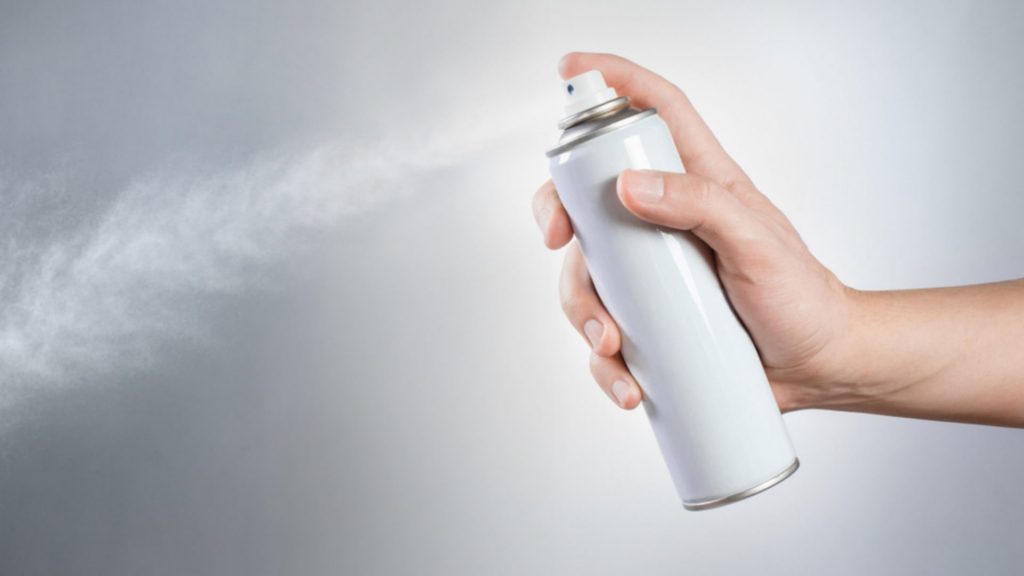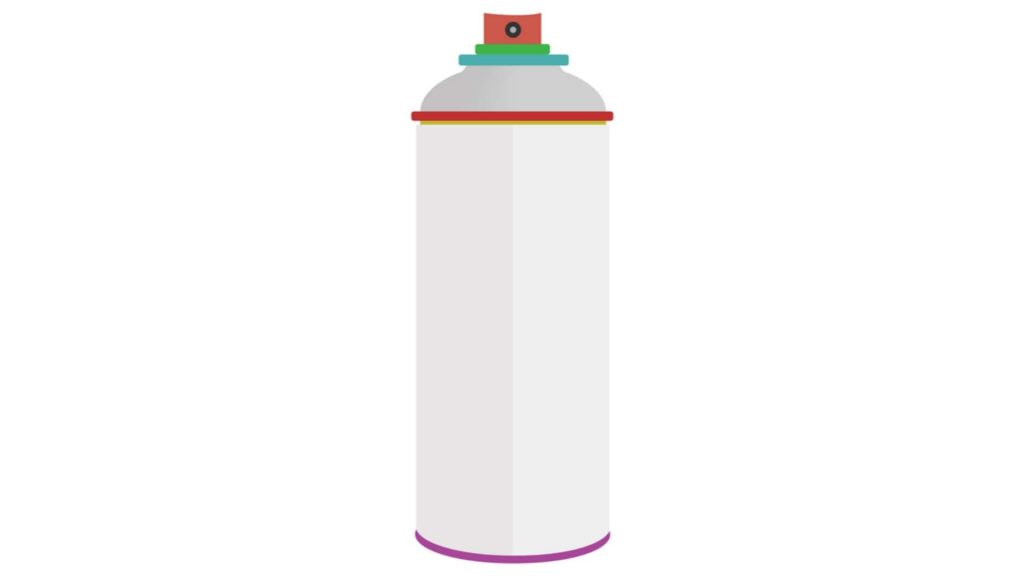Containers for Aerosols: The containers used for the manufacture of aerosol must withstand pressures as high as 140 to 180 psig at 130oF. The following aerosol containers have been used to package aerosol products.

(A) Metal Containers:
1. Tin plated steel:
(a) Side-seam (Three-piece)
(b) Two-piece or drawn
(c) Tin free steel
2. Aluminium:
(a) Two-piece
(b) One-piece (extruded or drawn)
3. Stainless steel
(B) Glass Containers:
1. Uncoated glass
2. Plastic-coated glass
Metal Containers
1. Tin-plated Containers:
To produce a light and relatively inexpensive aerosol container, tin-plated steel is used for aerosol containers. The tin-plated steel container consists of a sheet of steel plate that is electroplated on both sides with tin.
(a) Side-seam (three-piece) Containers:
Manufacture of container: Tin-plated steel is obtained in thin sheets. The sheet is cut into desired sizes that suit for body, top, and bottom. The body is shaped into a cylinder and seamed via a flanging and soldering operation. The bottom is joined to the body by a double-seaming operation. The top is pressed into shape and curled into a 1-inch opening. This is then attached to the body by a double-seaming operation. This process of manufacture makes the container exceptionally strong. These containers are available in sizes ranging from 90 ml to 720 ml.
The tin plate that is used consists of a steel plate coated with varying thicknesses of tin. The thickness of the tin coating is described in terms of its weight, for example, #25, #50, #75, #100. (#25 tin-plated indicates that ½ lb of tin is used to coat both sides of 112 sheets measuring 20 X 14 inches). In many instances, the body of the container is made to have a certain thickness of tin and the ends would have another thickness. This is done to obtain increased stability in the container.
Protection/Resistance of a container: For certain products, the tin affords sufficient protection so that no further treatment is necessary. Hair lacquers generally can be packaged in this type of container.
Sometimes, the addition of water and other corrosive ingredients or other substances, which attack tin, requires a container having an additional protective coating. This coating is usually organic and may consist of an oleoresin, phenolic, vinyl or epoxy coating. The liner (single or double coat) is added to the container either before fabrication (to tin sheets) or after fabrication (final container). Adding a coating to thin sheets is an easy, cheap and fast process. Whereas adding a coating to the finished container is slower and expensive, the coating will be continuous and durable.
(b) Two-piece or drawn Containers: The container body is obtained by drawing a thin tin sheet under 100 lb pressure by a multiple dies drawing process. The bottom is concave and double seamed into place. The opening is made to hold the standard 1-inch valve. The organic coating is generally applied by a spray process after fabrication. Containers made in this way are available in sizes ranging from 180ml to 360ml.
2. Aluminium Containers:
Manufacture: These are produced by an impact extrusion process. Hence the container is seamless. This will give added strength to the container. Containers made in this way are available in sizes ranging from 15 ml to 150 ml.
Resistance: Many existing pharmaceuticals are packaged in aluminium containers because these containers have a lesser danger of incompatibility due to their seamless nature and greater corrosion resistance. However, aluminium is corroded by pure water and pure ethanol. The combination of ethanol and propellant-11 in an aluminium container has been shown to produce hydrogen, acetyl chloride, aluminium chloride, propellant-21 and other corrosive products. Resistance can be given to the container by coating the inside of a container with organic materials such as epoxy, vinyl and phenolic resins.
3. Stainless Steel Containers:
(i) These containers are limited to the smaller sizes, owing to production problems as well as cost.
(ii) The containers are available in sizes ranging from 5ml to 30ml.
(iii) They are extremely strong.
(iv) They are resistant. In most cases, no integral organic coating is required.
(v) These containers are used for inhalation aerosols.

Glass Containers
Advantages:
1. Glass containers are preferred containers for medicines/pharmaceuticals due to the absence of incompatibilities.
2. Glass containers appear good.
3. Glass is stronger than most metallic containers.
4. Glass allows a greater degree of freedom in the design of the container.
Limitations:
1. If the container is dropped accidentally, the container breaks and the total contents are lost.
2. Glass containers are restricted to products having lower pressure and a lower percentage of propellant.
Types of Glass Containers:
Following two types of glass containers are available:
1. Uncoated glass containers: These containers have the advantage of decreased cost and high clarity. The contents can be viewed at all times.
2. Plastic coated glass containers: These are protected by a coating, which prevents the glass from shattering in the event of breakage.
(a) The plastic coating adheres to the container totally (except for the neck ring) and becomes an integral part of the container.
(b) The plastic coating fits over the glass container.
Make sure you also check our other amazing Article on : Formulation and Evaluation of Hair Dyes